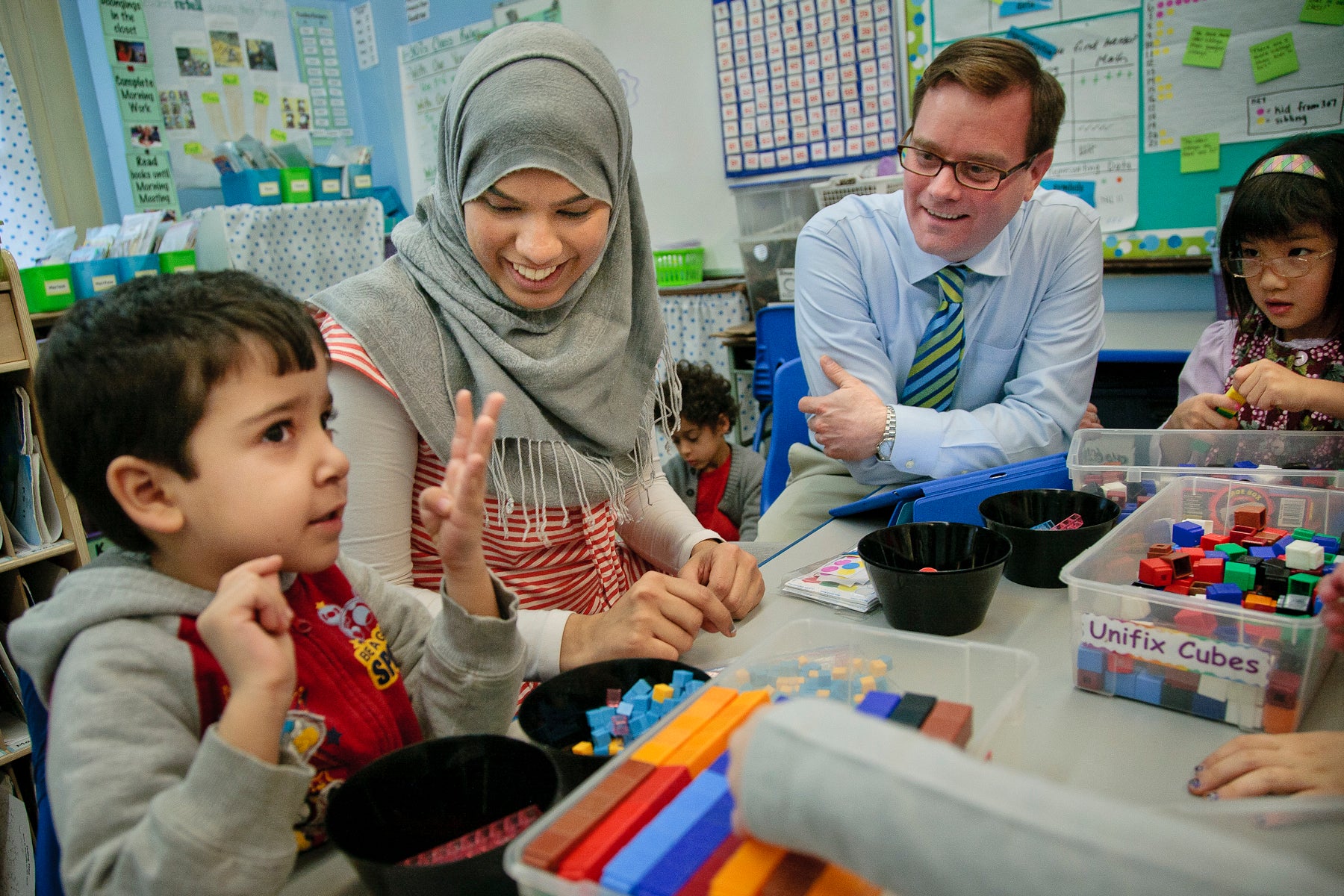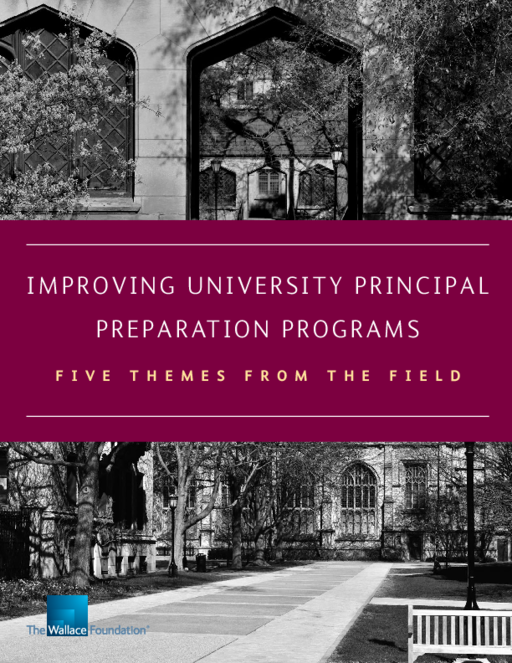
Breadcrumb
- Wallace
- Reports
- Improving University Principal P...
Improving University Principal Preparation Programs
Five Themes From the Field

- Author(s)
- Jacquelyn Davis
- Publisher(s)
- The Wallace Foundation
Summary
How we did this
This synthesis publication draws from four reports written in August and September 2015 by the American Association of Colleges for Teacher Education, The School Superintendents Association, the American Institutes for Research, and the University Council for Educational Administration at the request of The Wallace Foundation. These four reports informed a Wallace initiative aimed at improving university principal preparation.
School districts are largely dissatisfied with university principal preparation programs. That’s one finding in this publication, which examines the state of university principal preparation programs and how to improve them. The good news: many universities agree that programs need improvement and seem open to change.
State of University Principal Preparation
Nearly all district superintendents and universities surveyed agree that principals are “very/extremely important” to improving student learning. Despite that:
- Superintendents overwhelmingly agreed that university principal preparation programs need moderate to large improvements. (So said 80 percent of 408 superintendent respondents in 42 states.) Another 17 percent thought small improvements were needed. Only .5 percent thought no improvements were needed.
- Representatives of colleges and universities surveyed also saw shortcomings. For example, more than one-third (37 percent of 842 respondents) said current programs prepare graduates “not well” or only “somewhat well.”
Shortcomings and Obstacles to Change
This publication synthesizes four reports commissioned by The Wallace Foundation to examine university principal preparation. The authors identify the following major themes in these reports:
- Strong university-district partnerships are essential to high-quality preparation but are far from universal. Partnerships help universities align coursework with district needs. They also allow programs to offer clinical experiences in schools. University respondents overwhelmingly agreed that partnerships were essential. More than a fifth (22 percent) “disagreed” when asked if strong collaborations were features of existing programs. Superintendents were even more critical. Nearly 89 percent reported that collaboration occurred only sometimes or almost never.
Superintendents rated “require universities to collaborate with districts” as the most valuable of 10 possible policy actions the state might take to improve principal preparation.
- The course of study at preparation programs does not always reflect principals’ real jobs. Courses for aspiring principals are too often taught by those with no experience in schools, according to superintendents surveyed. They ranked “having most/all courses taught by current or former effective principals” as the most important way to improve programs.
Courses need to be updated to reflect contemporary practice, both superintendents and university respondents said. They said that principals especially needed more clinical experiences and mentorship.
- Some university policies and practices can hinder change. University respondents noted financial constraints as the top obstacle to launching or improving programs. For example, expert principals and superintendents must often take a steep pay cut to teach at universities. Tight budgets also limit the hiring of mentors and coaches for aspiring principals, they said.
University respondents noted other obstacles to change. These included lack of support from university officials and faculty members who don’t see the need for change.
- States have authority to play a role in improving principal preparation. Yet many are not using this power as effectively as possible. All four reports reflect this belief.
Both superintendents and university respondents were critical of licensure requirements. They thought policymakers understood too little about education or principal preparation. Superintendents thought they should be included in policy decisions about principal licensure.
Two of the reports compared state policies to best practice for principal preparation. They identified “high-leverage” actions states could take to strengthen principal licensure and university preparation. States largely fell short on implementing best practices, researchers found. For example, 46 states require principals to have two years of teaching experience but only four require an “effective” rating of teaching quality.
Key Takeaways
- School districts are largely dissatisfied with university principal preparation programs. Most (80 percent of 408 superintendents surveyed in 42 states) said university principal preparation needed moderate to large improvement. Many university respondents agreed.
- Strong university-district partnerships are essential to high-quality preparation but are far from universal. Partnerships help universities align coursework with district needs and allow programs to offer clinical experiences in schools. But nearly 89 percent of superintendents surveyed reported that collaboration occurred only sometimes or almost never. Superintendents rated “require universities to collaborate with districts” as the most valuable of 10 possible policy actions a state might take to improve principal preparation.
- The course of study at preparation programs does not always reflect principals’ real jobs. Courses for aspiring principals are too often taught by those with no experience in schools, according to superintendents surveyed. They ranked “having most/all courses taught by current or former effective principals” as the most important way to improve programs.
- Some university policies and practices can hinder change. University respondents noted financial constraints as the top obstacle to launching or improving programs. They also noted lack of support from university officials and faculty members who don’t see the need for change.
- States have authority to play a role in improving principal preparation. Yet many are not using this power as effectively as possible. Researchers identified “high-leverage” actions states could take to strengthen principal licensure and university preparation. States largely fell short on implementing best practices identified in research, they found.
Visualizations


